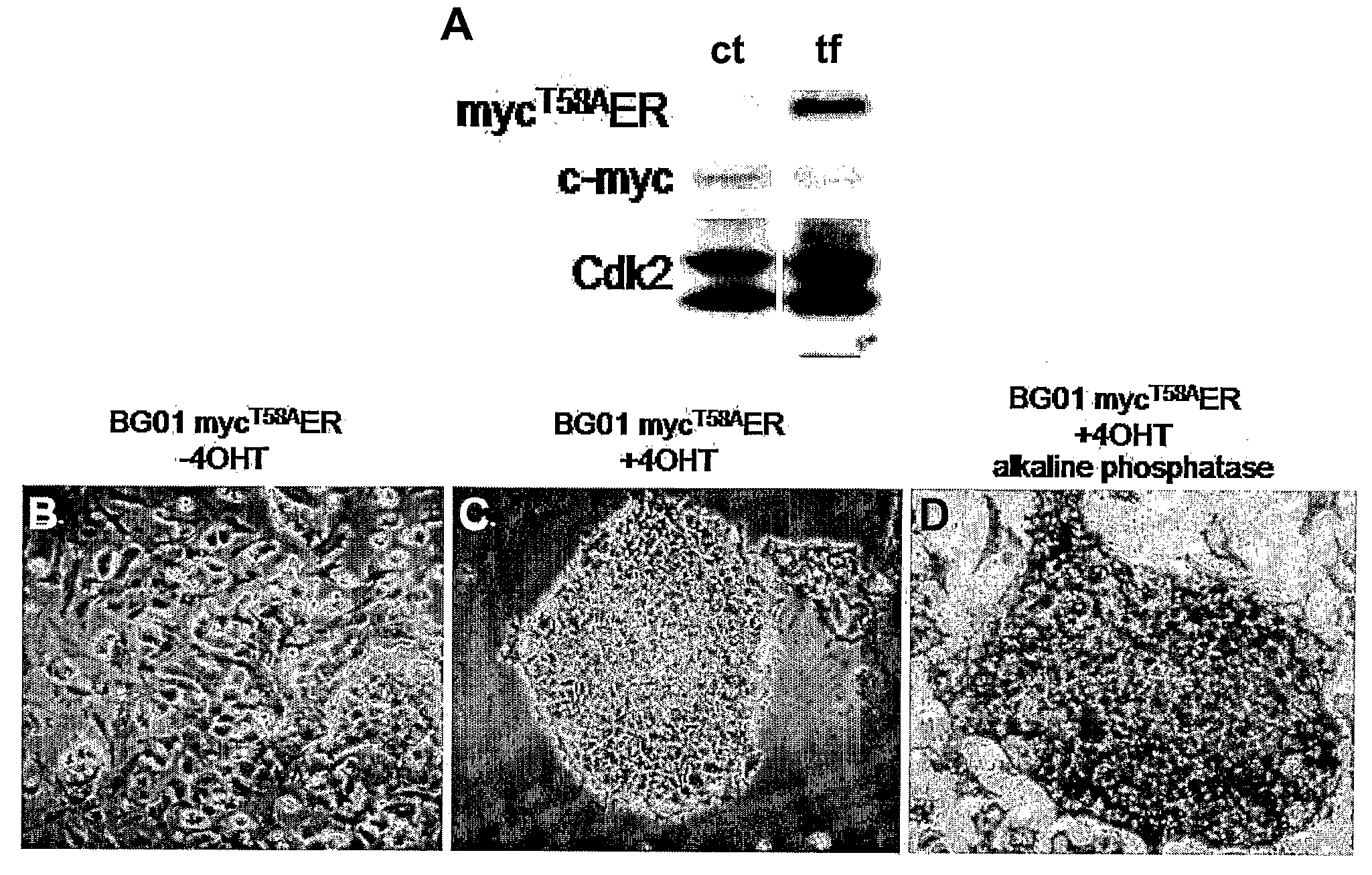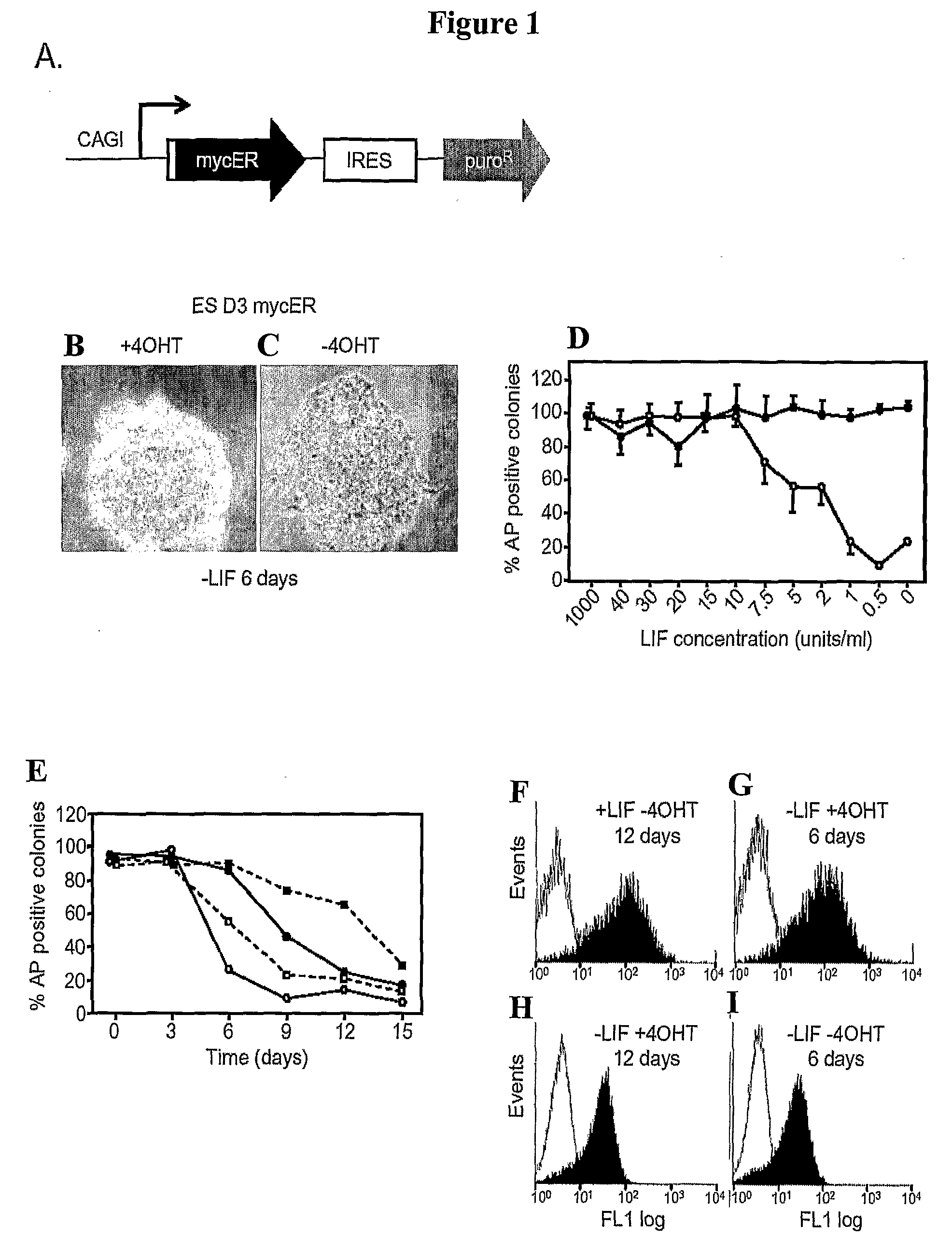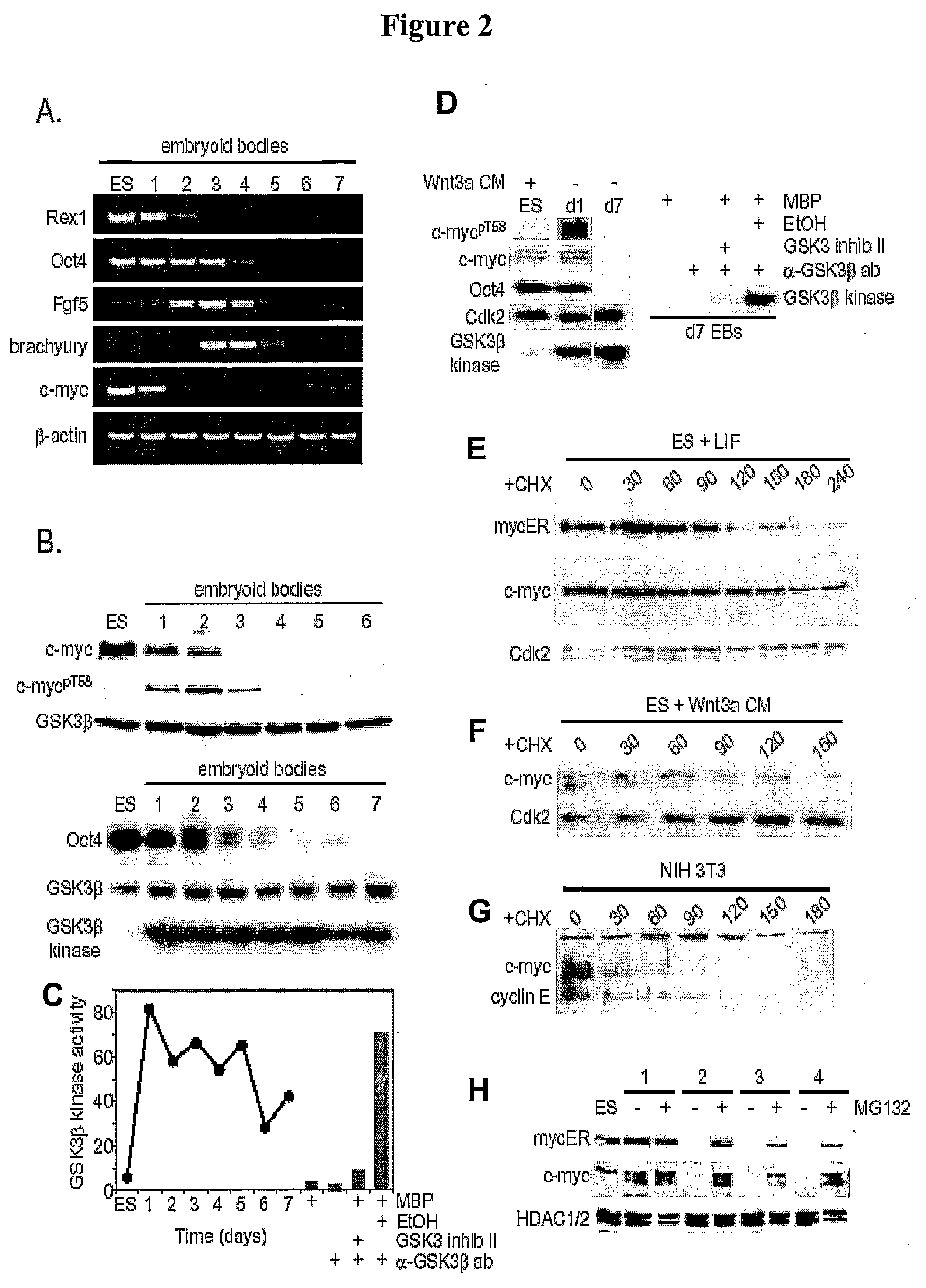Methods and Compositions Utilizing Myc and Gsk3Beta to Manipulate the Pluripotency of Embryonic Stem Cells
- Summary
- Abstract
- Description
- Claims
- Application Information
AI Technical Summary
Benefits of technology
Problems solved by technology
Method used
Image
Examples
example 1
Sustained c-myc Expression Severely Delayed Mouse ES Cell Differentiation
[0102]To identify downstream effectors of LIF-STAT3 signaling, a panel of genes that were known to be regulated by STAT3 in other contexts were screened for their ability to support self-renewal under conditions where their expression was enforced. This panel included genes involved in cell cycle progression such as c-fos, jun B, cyclin D1 and c-myc in addition to regulators of apoptosis such as bcl-2 and Pim-1 (see Hirano et al., (2000) Oncogene, 19:2548-2556; Zhang et al., (2003) Oncogene, 22:894-905). Candidate cDNAs were expressed constitutively from the human EF1α promoter (Hobbs et al., (1998) Biochem. Biophys. Res. Comm., 252:368-372), the CAGI promoter (Pratt et al., (2000) Dev. Biol., 228:19-28) or, from the CAGI promoter as a fusion protein linked to the steroid binding domain of the estrogen receptor (FIG. 1A). By addition of 4OHT to cultures, the labile cytoplasmic form of ER fusions can be switched...
example 2
c-myc was Elevated and has Unusual Stability in Murine ES Cells
[0105]To understand more about the possible role of c-myc in ES cell self-renewal and differentiation, the regulation of c-myc in ES cells and during embryoid body (EB) differentiation was characterized. For c-myc to be a bone fide regulator of self-renewal and pluripotency in ES cells, it was predicted that its activity would be elevated in ES cells, but rapidly downregulated during differentiation. RT-PCR analysis showed that c-myc transcripts were elevated in ES cells but declined by day 2 of EB differentiation (FIG. 2B), closely paralleling the decline in Rex1 mRNA (FIG. 2A). Levels of c-myc protein were also elevated in LIF-maintained ES cells but declined markedly by day 1 of LIF withdrawal and even further over days 1-3 (FIG. 2C). The down-regulation of c-myc protein and mRNA therefore occurs well before Oct4 levels are extinguished and prior to the appearance of early differentiation markers such as Fgf5 (early p...
example 3
GSK3β was Excluded from the Nucleus in ES Cells
[0110]A key issue relating to the understanding of self-renewal is determining how GSK3β activity is suppressed in ESCs but activated in cells committed to differentiate. Using immunofluorescent staining, GSK3β was shown to be excluded from the nucleus in murine ESCs and human ESCs, but was also shown to localize to the nucleus in differentiated cells (data not shown). The nuclear localization of GSK3β in differentiating murine cells coincides with the degradation of c-myc, suggesting nuclear import of GSK3β is a key step in collapse of the self-renewal pathway and in the initial commitment to differentiate. The cytoplasmic localization of GSK3β in mESCs was corroborated by subcellular fractionation using hypotonic lysis (FIG. 3). These data indicate that GSK3β regulation is conserved between human and murine ESCs and that the GSK3β-c-myc dependent mechanism of self-renewal also applies to hESCs.
PUM
 Login to View More
Login to View More Abstract
Description
Claims
Application Information
 Login to View More
Login to View More - R&D
- Intellectual Property
- Life Sciences
- Materials
- Tech Scout
- Unparalleled Data Quality
- Higher Quality Content
- 60% Fewer Hallucinations
Browse by: Latest US Patents, China's latest patents, Technical Efficacy Thesaurus, Application Domain, Technology Topic, Popular Technical Reports.
© 2025 PatSnap. All rights reserved.Legal|Privacy policy|Modern Slavery Act Transparency Statement|Sitemap|About US| Contact US: help@patsnap.com



